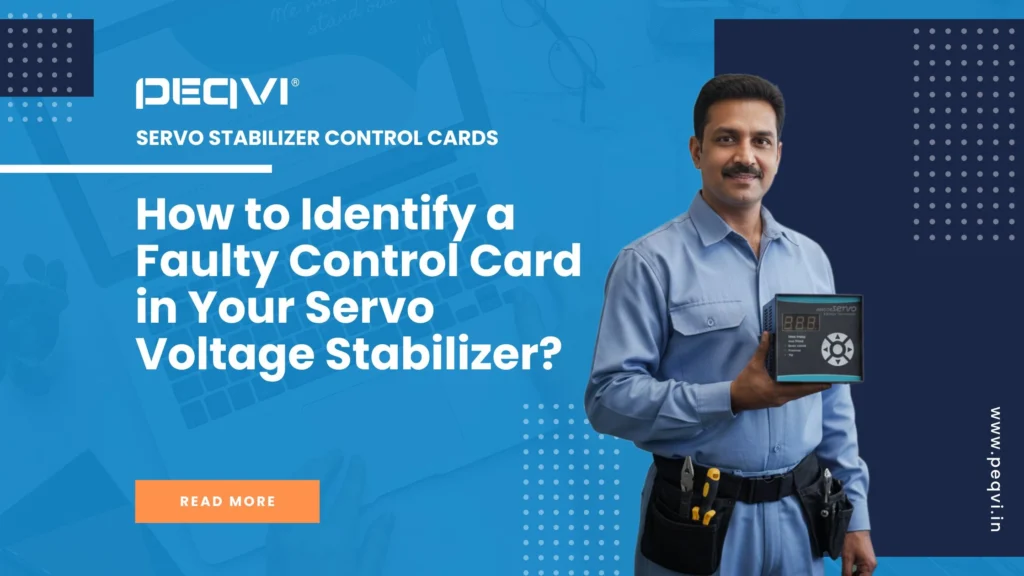A control card is the main circuit that manages sensing, correction, and protection inside a servo voltage stabilizer. If the card becomes faulty, the stabilizer stops working smoothly. You may see unusual voltage swings, no output, delayed correction, or repeated tripping.

Knowing the signs of a bad control card helps you act early and avoid damage to appliances.
1. No Output from the Stabilizer
One of the most common signs is when the stabilizer does not give any output. The input may be present, the switch may be on, but the output remains dead. This usually means the control card is not sending the command to the relay or motor.
2. Motor Not Moving or Moving Randomly
If the servo motor does not move at all, or moves suddenly without reason, the control card may be at fault. It may not be sensing voltage correctly or may be sending wrong signals.
Random jerks or continuous hunting are also signs of faulty control logic.
3. Wrong Voltage on Output
When the output voltage stays too low or too high even when input is normal, the sensing section of the control card may be damaged. Incorrect sensing makes the stabilizer adjust wrongly.
This is one of the first signs of early failure.
4. Too Much Delay in Correction
If your stabilizer takes too long to correct voltage, or reacts slowly to input changes, the card may have damaged components such as sensors or timing circuits.
Digital cards normally correct fast, so slow performance is a clear warning.
5. Frequent Tripping or False Cutoffs
If your stabilizer keeps cutting off even when the supply is fine, it may be due to faulty cutoff circuits on the control card.
False high or low voltage cutoffs happen when sensing signals are unstable or noisy.
6. Display Not Working or Showing Wrong Values
If your stabilizer has a digital display, a faulty card often shows random numbers, flickering readings, or no display at all.
This usually means the microcontroller or display driver section of the card is damaged.
7. Burning Smell or Heat Marks on PCB
A burnt smell, dark marks, or melted components on the card clearly show damage. This can happen due to surge, high temperature, or short circuit.
A card with burnt areas should be replaced as soon as possible.
8. Stabilizer Clicking Repeatedly
If the relay keeps clicking continuously, the card may be failing to lock on the correct output. This is usually due to bad sensing or weak relay drivers on the PCB.
Conclusion
A faulty control card can affect every part of your servo stabilizer. By noticing early signs like wrong output, random motor movement, frequent tripping, or display issues, you can get the card repaired or replaced before it causes bigger failures.
A good control card ensures stable voltage and protects your appliances for years.

